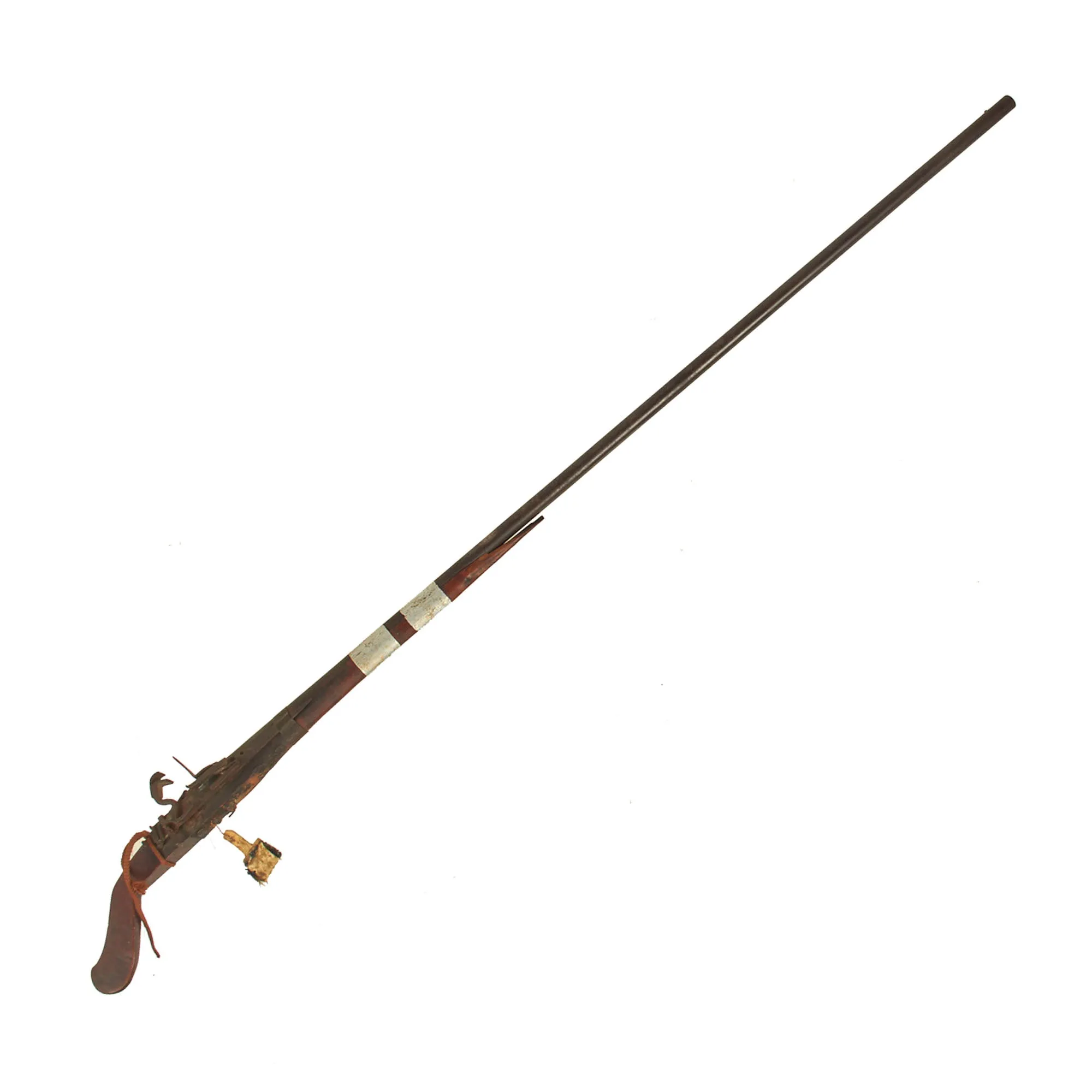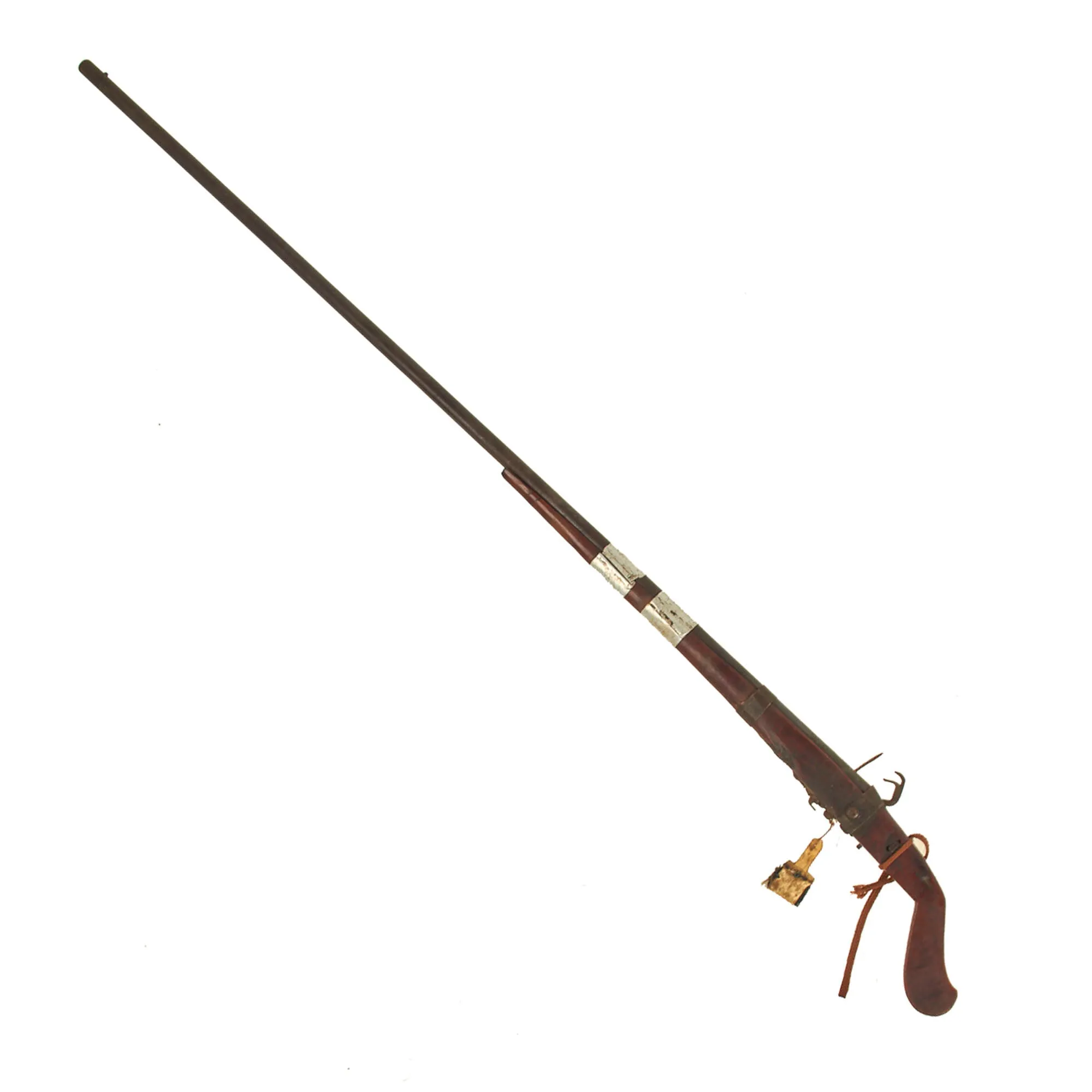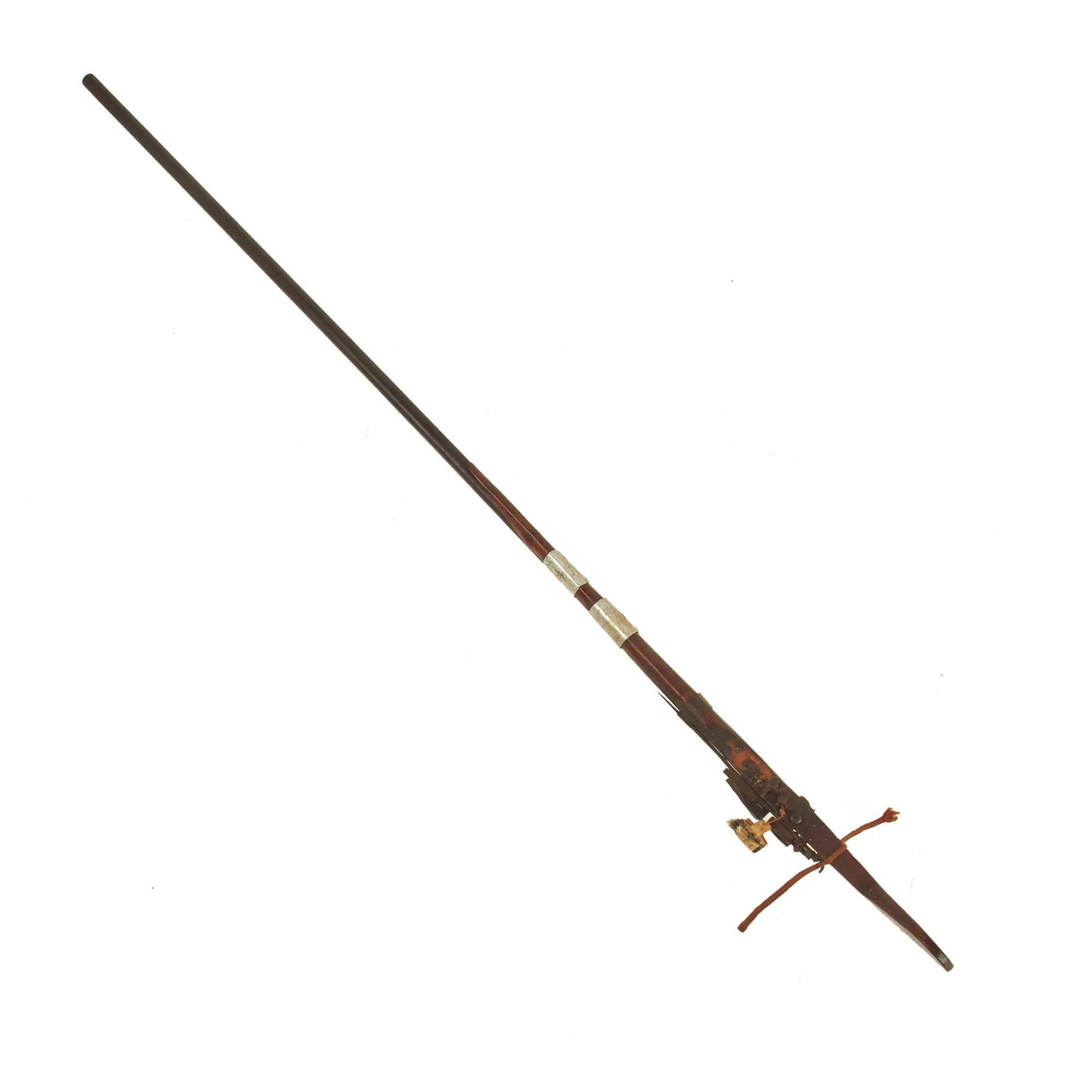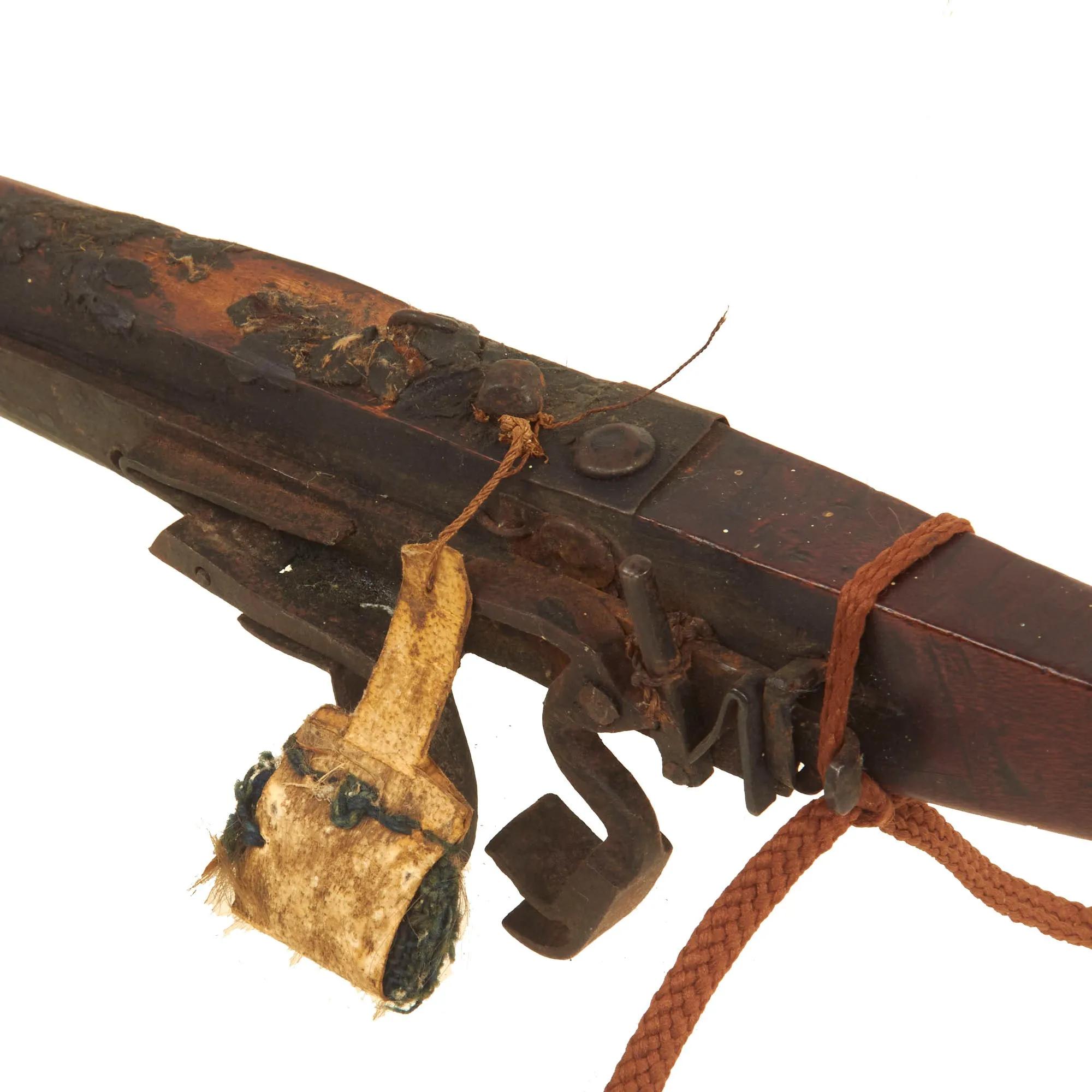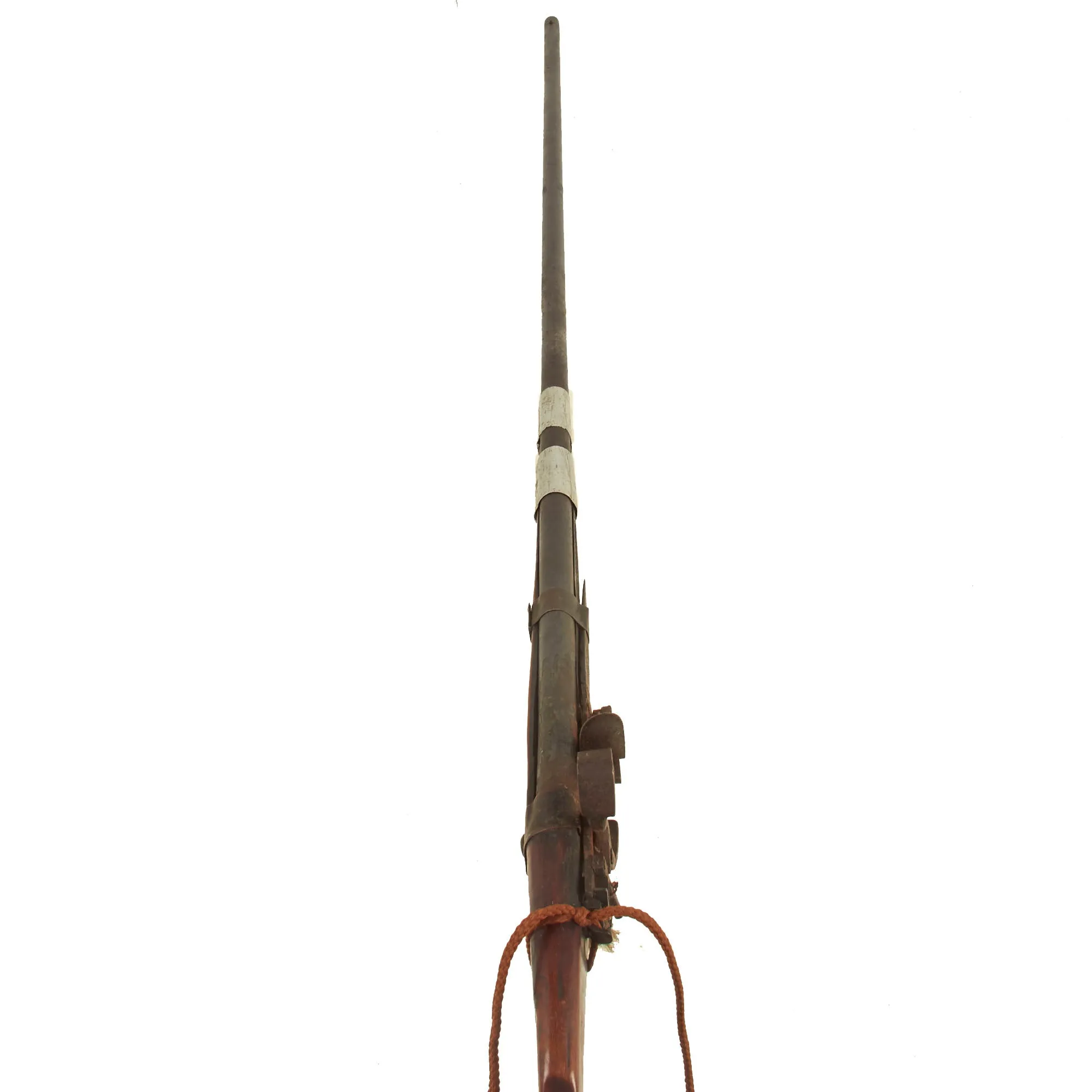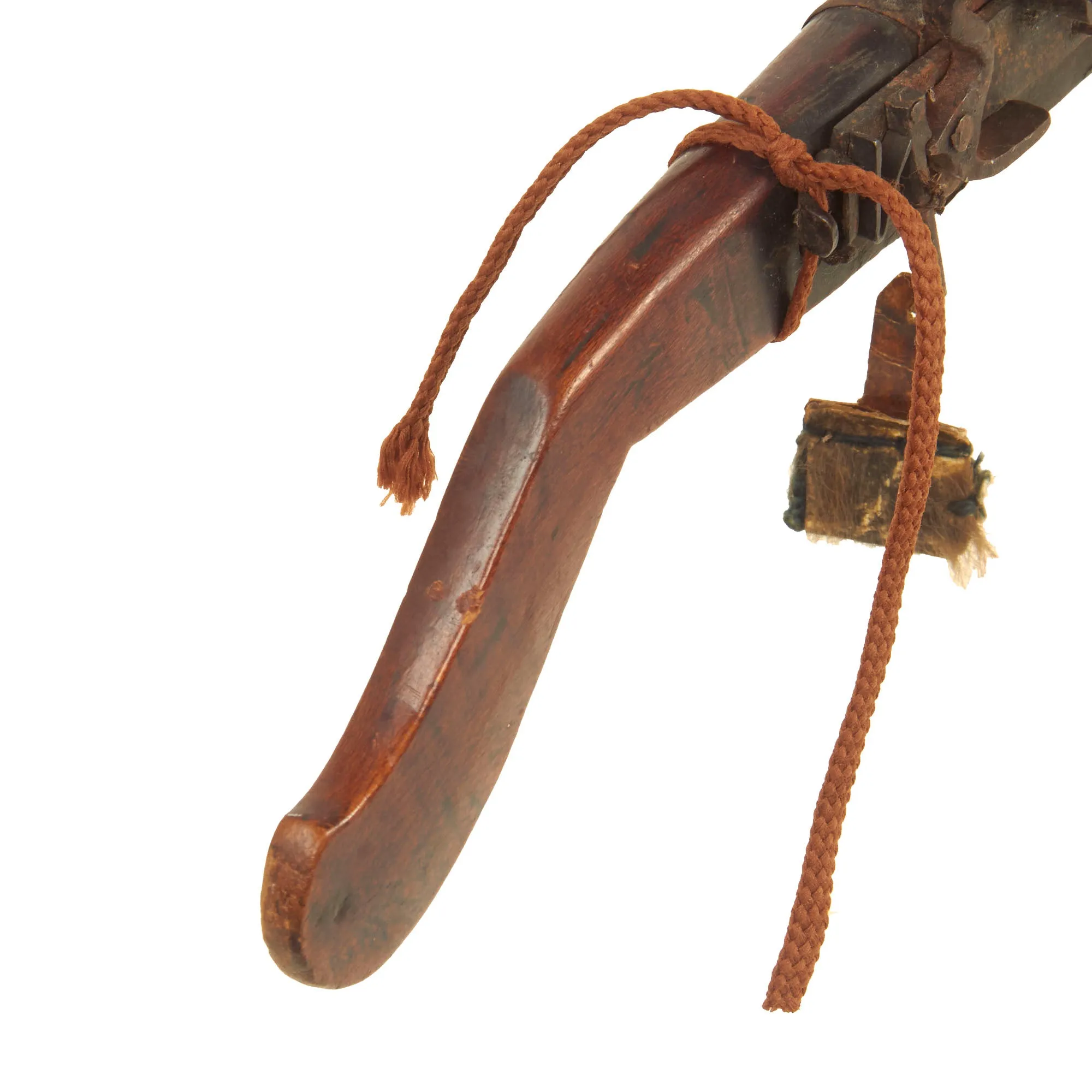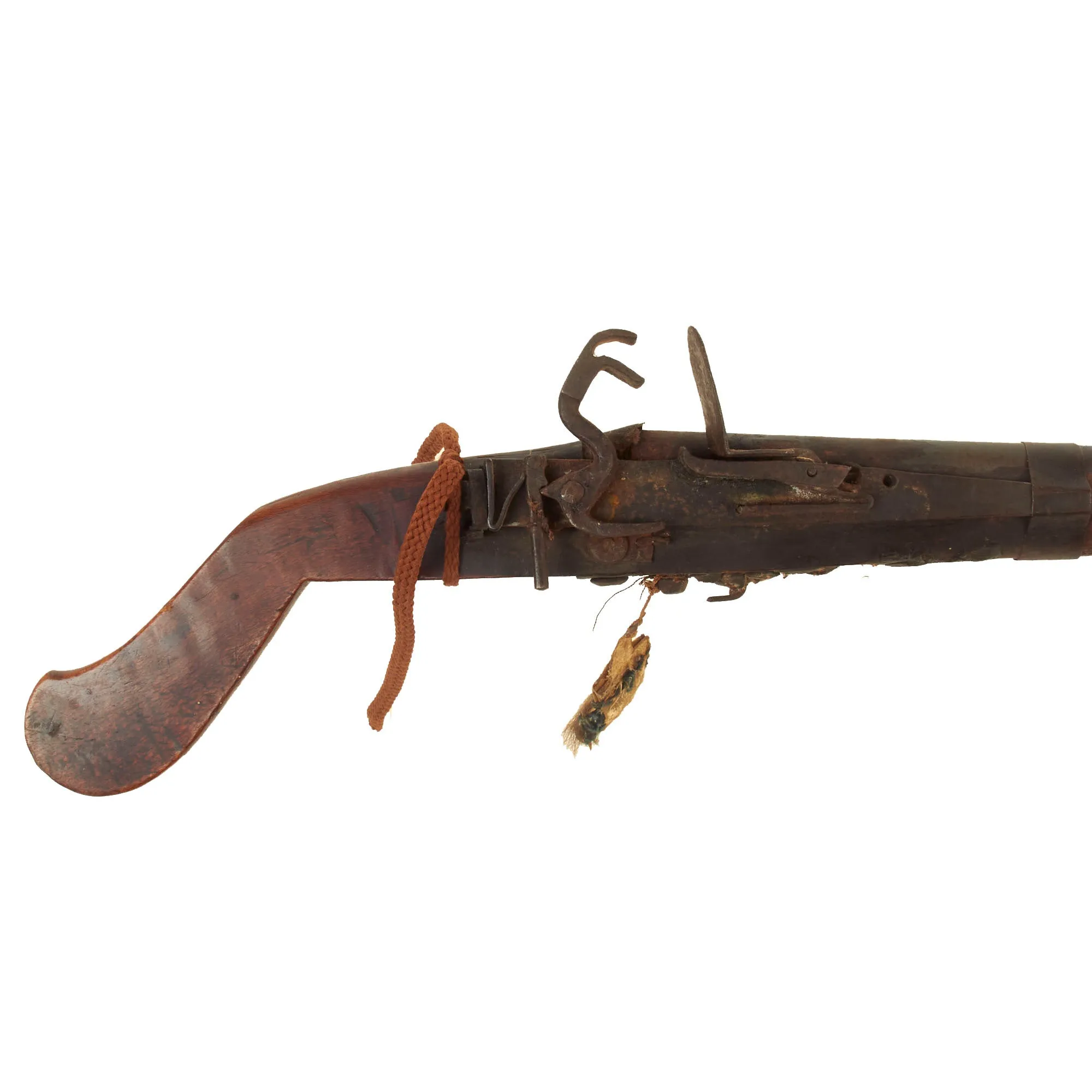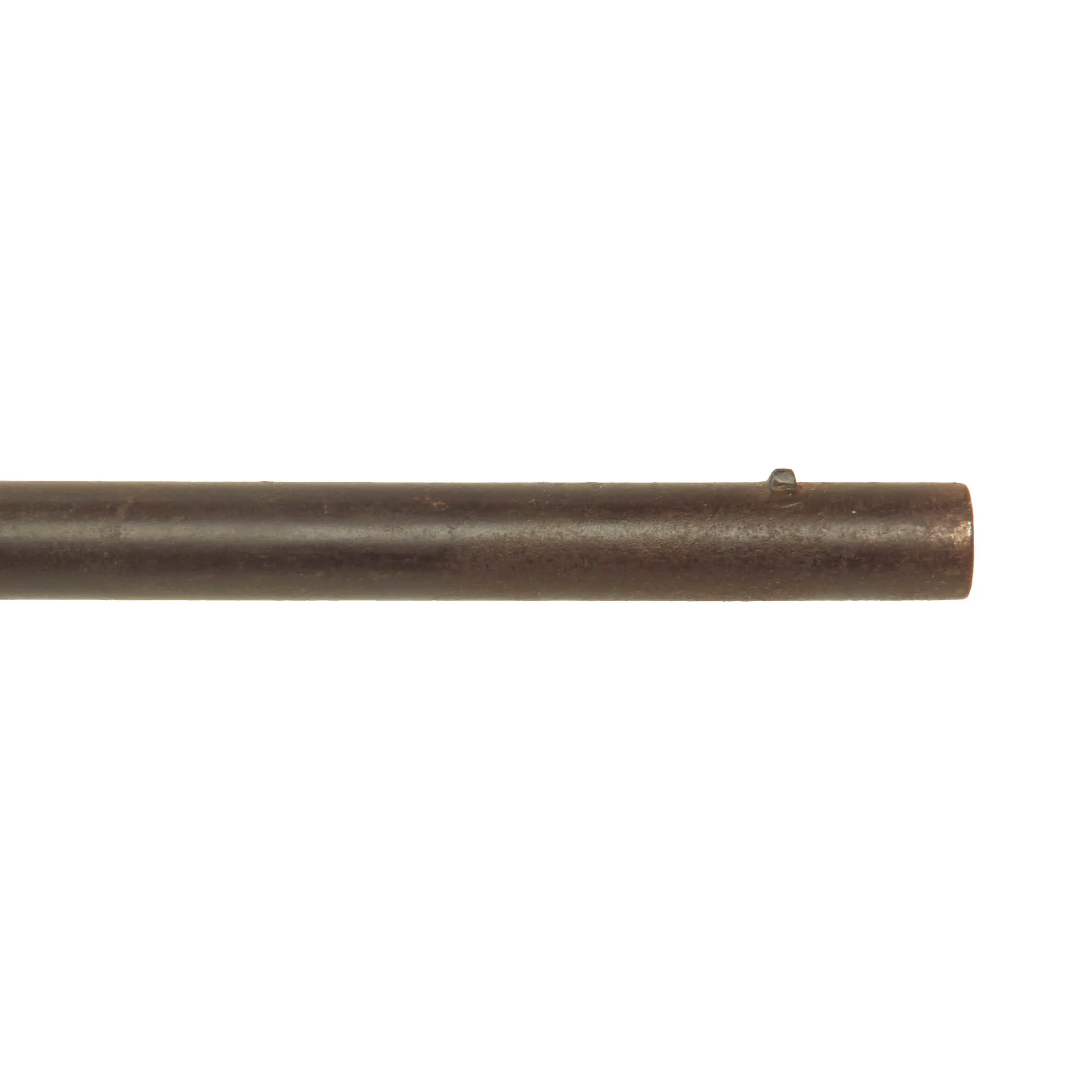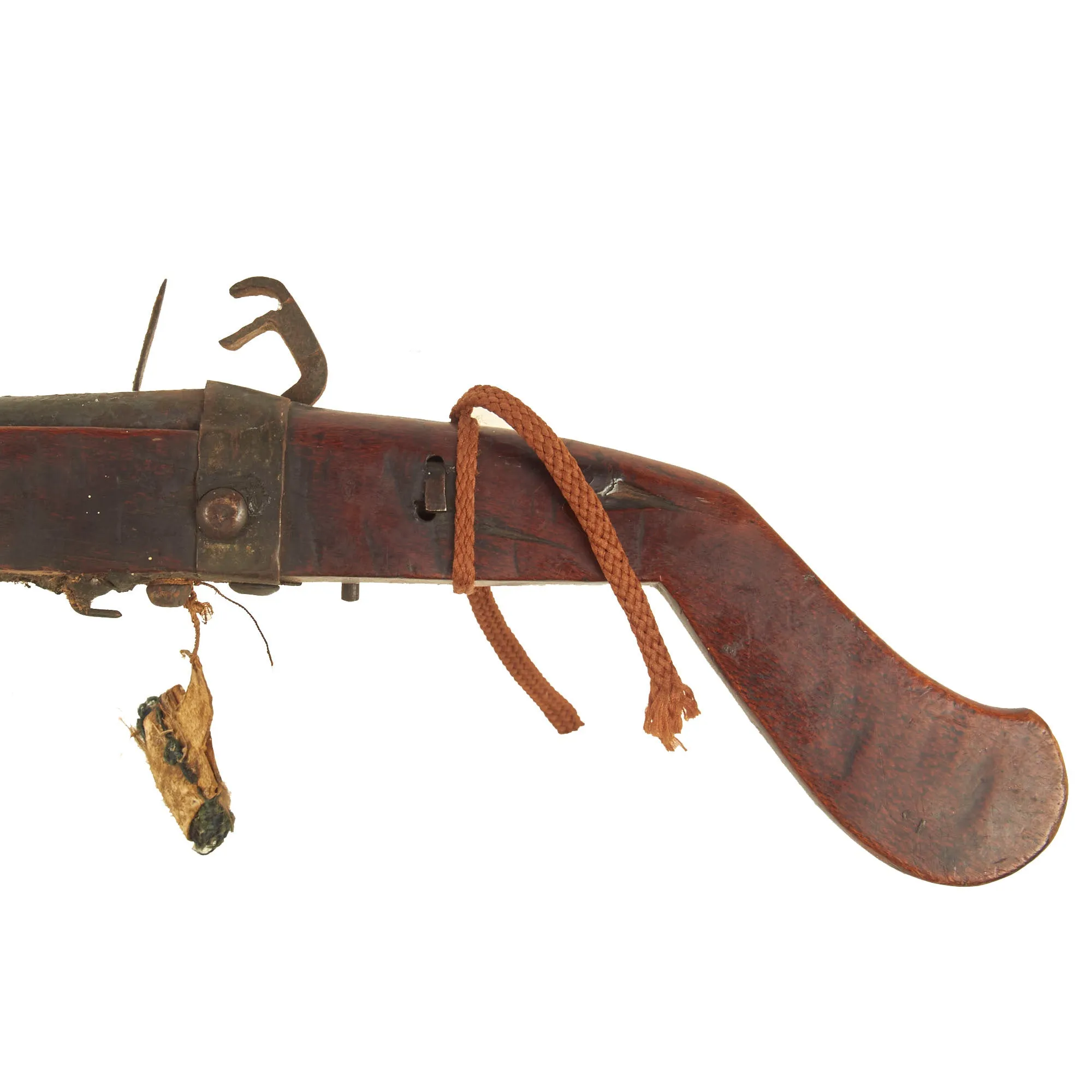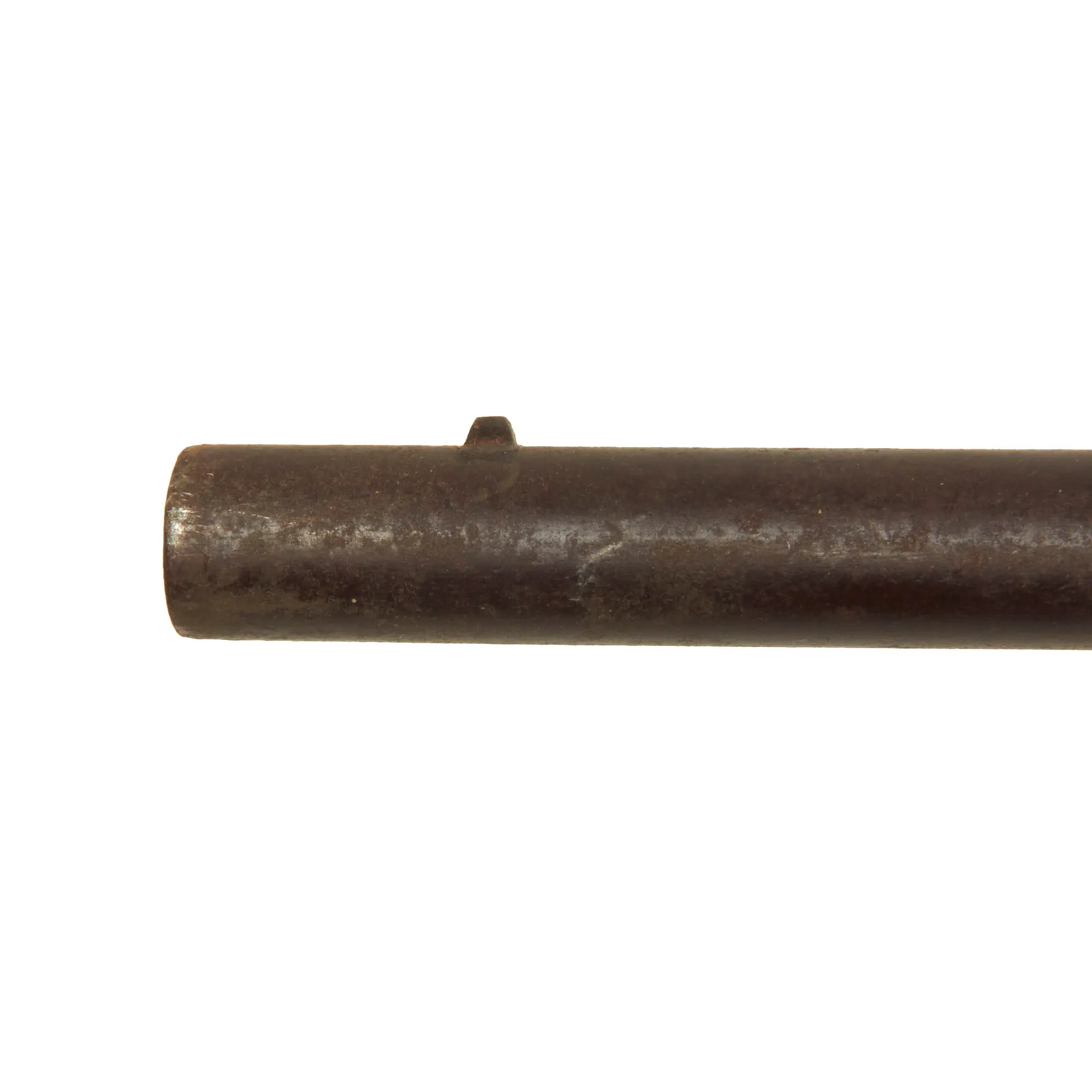Original item: One of a Kind. Over the years, IMA has purchased many collections and groups of antique guns, in which case we need to take all of them, as we did in Nepal. While these collections were generally full of guns that relatively good condition, they also had some that were less complete and unfortunately would take more restoration time than we were able to give them. We kept them in storage, possibly for future products, but have now decided to offer these "As Found" antique firearms to our customers as restoration projects. These are all original and as we received them, except for cleaning the dirt and grime off the exterior.
Please note that these are still real antique guns, and are being sold in "As is" condition at a significant discount from what they would sell at if we were to fully restore them. We will do our best to photograph and describe them and know that our customers will know exactly what they are getting. Some of these, such as this example, look to have possibly been project or parts guns, and are missing a significant amount of parts. These are being sold in "Grade 2" condition, and on these ALL SALES ARE FINAL.
This is a very nice Grade 2 "As Found" USGI bring back item from the Vietnam War, apparently brought back by members of the U.S. Special Forces. They had interacted quite a bit with the indigenous "Montagnard" groups in the Vietnam Area during the conflict. We usually get back very primitive items such as crossbows, but occasionally we get out these "Snaphaunce" style muskets.
These most unusual "firearms" of truly ancient design were as far as the Montagnard groups had ever gotten into "modern technology", even by the 1960s. Based on the 17th Century French Snaphaunce ignition system, the Montagnard system is even MORE primitive. We suspect they may have been acquired by trade, and then refitted as the stocks rotted out. This example could be 200 years old or even 20th Century, but we definitely feel that this is at least 19th century or earlier. Either way due to the antiquated design, it is considered an Antique by Federal Law.
Our example has a 40" barrel in approximately .40" smooth bore which is muzzle loaded. It has a very light wood stock culminating in almost a walking stick handle butt end, and measures 47" in overall length. The barrel is attached to the very light weight fore stock with sheet aluminum bands, which may be more recent replacements.
Condition Notes:
- Overall condition shows oxidation on the metalwork with some pitting and peppering.
- Wood Stock is snapped off at the front, and probably missing a few inches.
- Snaphaunce lock is non-functional, as it is missing the entire mainspring, which usually would loop around from in front of the frizzen under the lock.
A nice "As Found" USGI bring back example of totally unique design. Extremely unusual and ready to display! Please make sure to look at all the high resolution (2000x2000) pictures before purchasing, as ALL SALES ARE FINAL.
Specifications:
Years of Manufacture: 19th Century
Caliber: approx .40 inches
Ammunition Type: Lead Ball & Powder
Barrel Length: 40 inches
Overall Length: 47 inches
Action: Snaphaunce Lock
Feed System: Muzzle-Loaded
History of the Snaphaunce Lock:
A snaphance or snaphaunce is a type of lock for firing a gun or is a gun using that mechanism. The name is Dutch in origin but the mechanism can not be attributed to the Netherlands with certainty. It is the mechanical progression of the wheellock firing mechanism, and along with the miquelet lock and doglock are predecessors of the flintlock mechanism. It fires from a flint struck against a striker plate above a steel pan to ignite the priming powder which fires the gun. Examples of this firearm can be found through Europe, North Africa, and the Middle East.
The Degar, also known as Montagnard, are the indigenous peoples of the Central Highlands of Vietnam. The term Montagnard means "people of the mountain" in French and is a carryover from the French colonial period in Vietnam. The term "Degar" is generally used only by people connected with Kok Ksor and the Degar Foundation. Most of those living in America refer to themselves as Montagnards, while those living in Vietnam refer to themselves by their individual tribe.
The Vietnamese tribesmen who fought alongside American Special Forces won the Green Berets’ admiration—and lost everything else.
In 1965, syndicated columnists Rowland Evans and Robert Novak used a frontier metaphor to describe the American Special Forces’ advisory role with Vietnamese tribesmen. “Assume that during our own Civil War the north had asked a friendly foreign power to mobilize, train, and arm hostile American Indian tribes and lead them into battle against the South,” they wrote.
If that historical hypothetical suggested wild possibilities, Evans and Novak used it advisedly. For four years, Special Forces had been training an oppressed minority group in guerrilla tactics, providing them with weapons and acting as de facto aid workers in their communities. When Americans remember Vietnam, we often think of the war as having three major actors: the North Vietnamese, the South Vietnamese, and the American military. But there was another player: the Montagnards.
The indigenous Montagnards, recruited into service by the American Special Forces in Vietnam’s mountain highlands, defended villages against the Viet Cong and served as rapid response forces. The Special Forces and the Montagnards—each tough, versatile, and accustomed to living in wild conditions—formed an affinity for each other. In the testimony of many veterans, their working relationship with the Montagnards, nicknamed Yards, was a bright spot in a confusing and frustrating war. The bond between America’s elite fighters and their indigenous partners has persisted into the present, but despite the best efforts of vets, the Montagnards have suffered greatly in the postwar years, at least in part because they cast their lot with the U.S. Army. In a war with more than its share of tragedies, this one is less often told but is crucial to understanding the conflict and its toll.
The Montagnards, whose name is derived from the French word for mountaineers, are ethnically distinct from lowland, urban Vietnamese. In the early ’60s, writes military historian John Prados, almost a million Montagnards lived in Vietnam, and the group was made up of about 30 different tribes. The Montagnards spoke languages of Malayo-Polynesian and Mon Khmer derivations, practiced an animistic religion (except for some who had converted to Christianity), and survived through subsistence agriculture.
When the United States Special Forces first arrived in Vietnam in the early 1960s, the Montagnards were already decades into an uneasy relationship with Vietnam’s various central governments. Before their withdrawal, the French had promised to give the Montagnards protected land—a promise that vanished with them. The Communist government of North Vietnam had included the right for highlander autonomy in its founding platform in 1960, but many Montagnards were uneasy about Communist intentions. Meanwhile, South Vietnam’s President Ngô Đình Diệm had begun to settle refugees from North Vietnam in the highlands. His government neglected education and health care in the Montagnard areas, assigning inexperienced and ineffective bureaucrats to handle their needs.
Tensions between the Vietnamese and the Montagnards were ratcheted up by racism. Vietnamese called the tribal people mọi, or savage. Prados recounts a story of a “young Vietnamese woman who told an American, in all seriousness, that Montagnards had tails.” Stereotypes about the “primitive” nature of the tribesmen—unfounded beliefs that they were all nomadic and lived by slash-and-burn farming—made it easier for the government to advocate the expropriation of their lands.
Starting in 1961, in an initiative at first run by the CIA, the Special Forces moved into the Vietnamese mountains and set up the new Village Defense Program (a forerunner of the better-known Strategic Hamlet Program). The Montagnards’ forested mountain homelands, which ran along the Cambodian and Laotian borders in the western portion of Vietnam, were prime highways for North Vietnamese forces to move men and materiel. The Viet Cong, understanding the way the Southern government discriminated against the tribes, promised much if the tribesmen would defect—and some did. But the VC also preyed on isolated villages, taking food and pressing Montagnards into labor and military service.
The working relationship between Green Berets and Montagnards began in the Village Defense Program. Detachments of 12 Green Berets trained Montagnards, drawn from the tribe dominant in the surrounding area, into “civilian irregular defense groups,” or CIDGs. The idea was that a security zone would radiate outward from each camp, with CIDG serving as defense forces, advised by small groups of American Special Forces and South Vietnam’s own special forces, the LLDB. With help from the Navy’s Seabees, Special Forces built dams, roads, bridges, schools, wells, and roads for Montagnard groups, and Special Forces medics provided rudimentary health care. By December 1963, 43,000 Montagnard defenders guarded the area around the first camp, Buon Enao, from the Viet Cong, while 18,000 Montagnards were enlisted in mobile strike forces, which were deployed by air to spots where conflict broke out.
The Green Berets also admired the Montagnards’ fighting prowess, noting their loyalty. As Bridges told an interviewer, the Green Berets believed that “the Montagnards made excellent soldiers.” They were used to working in teams: “They were very good at small unit tactics and seemed to know instinctively how to protect their flanks. In a way, combat was almost like a family situation with them: you protect your brother and your brother protects you.” Bridges added, “I found them very brave under fire. They wouldn’t hesitate to run out and help a team member who was in trouble.”
NOTE: International orders of antique firearms MUST be shipped using UPS WW Services (courier). USPS Priority Mail international will not accept these. International customers should always consult their country's antique gun laws prior to ordering.




